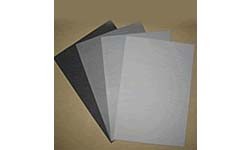
Mineral Fiber Sheet is often compared to other roofing materials such as asphalt shingles, metal roofing, and concrete tiles. Here are some frequently asked questions about how Mineral Fiber Sheet compares to these materials:
Mineral Fiber Sheet is more durable than asphalt shingles, which typically last between 15 and 30 years. Mineral Fiber Sheet can last upwards of 50 years, making it a more cost-effective choice in the long run.
Mineral Fiber Sheet is more affordable than metal roofing, which can be up to three times more expensive. However, metal roofing is more lightweight and can offer better energy efficiency, making it a better choice for some applications.
Mineral Fiber Sheet is less expensive than concrete tiles, which can be up to twice the cost of Mineral Fiber Sheets. Concrete tiles are also heavier and more difficult to install, making Mineral Fiber Sheet a better choice for many roof types.
In conclusion, Mineral Fiber Sheet is an excellent choice for roofing applications due to its strength, durability, and resistance to fire and moisture. It is also an affordable option compared to other roofing materials. If you are in need of high-quality Mineral Fiber Sheet roofing materials, contact Ningbo Kaxite Sealing Materials Co., Ltd. at [email protected] or visit https://www.top-seals.com for more information.
1. Hassen Mansour et al. (2021). Thermal Conductivity of Mineral Wool Insulation at High Temperatures. Journal of Thermal Insulation and Building Envelopes.
2. Muhammad Adnan et al. (2021). Sustainable composite of mineral wool, bio-based binder, and recycled polyethylene terephthalate as thermal and acoustic insulation material. Journal of Cleaner Production, 315, 128259.
3. S Bhatt et al. (2021). Heavy metals removal potential of carbonized mineral wool adsorbent for wastewater treatment. Clean Engineering Progress, 3(2), 1-13.
4. Waleed M. S. Hozan et al. (2021). Compressive strength prediction of cement–mineral wool composite using artificial neural networks (ANN). Materials Today: Proceedings, 43(9), 3134-3139.
5. Cyrus Mahdizadeh et al. (2021). A comparative study on the thermal insulation performance of fiber reinforced concrete containing steel and basalt fibers combined with mineral wool. Construction and Building Materials, 308, 124914.
6. Neha Khurana et al. (2021). Eco-friendly hybrid composite made up of hybrid fibers and waste mine tailings (as mineral wool) reinforced with starch matrix: Fabrication and performance evaluation. Journal of Environmental Chemical Engineering, 9(2), 104928.
7. Haimei Liu et al. (2021). Study on thermal and compressive properties of modified phenolic foam composites reinforced by perlite mineral wool. Materials Today: Proceedings, 39(8), 2895-2900.
8. Adebayo Yusuf et al. (2021). Environmental performance of novel optimal binary mineral wool-insulation based bio-cement composite for sustainable construction. Construction and Building Materials, 285, 122853.
9. Qiang Lyu et al. (2021). Experimental and numerical investigation on the thermal performance of a capillary embedded composite PCM wall using basalt mineral wool. Renewable Energy, 170, 217-229.
10. Mohammad Mehdi Jinous et al. (2021). An experimental study on the flexural behavior and mode of failure of lightweight concrete beams containing basalt mineral wool. Materials and Design, 199, 109399.
TradeManager
Skype
VKontakte
